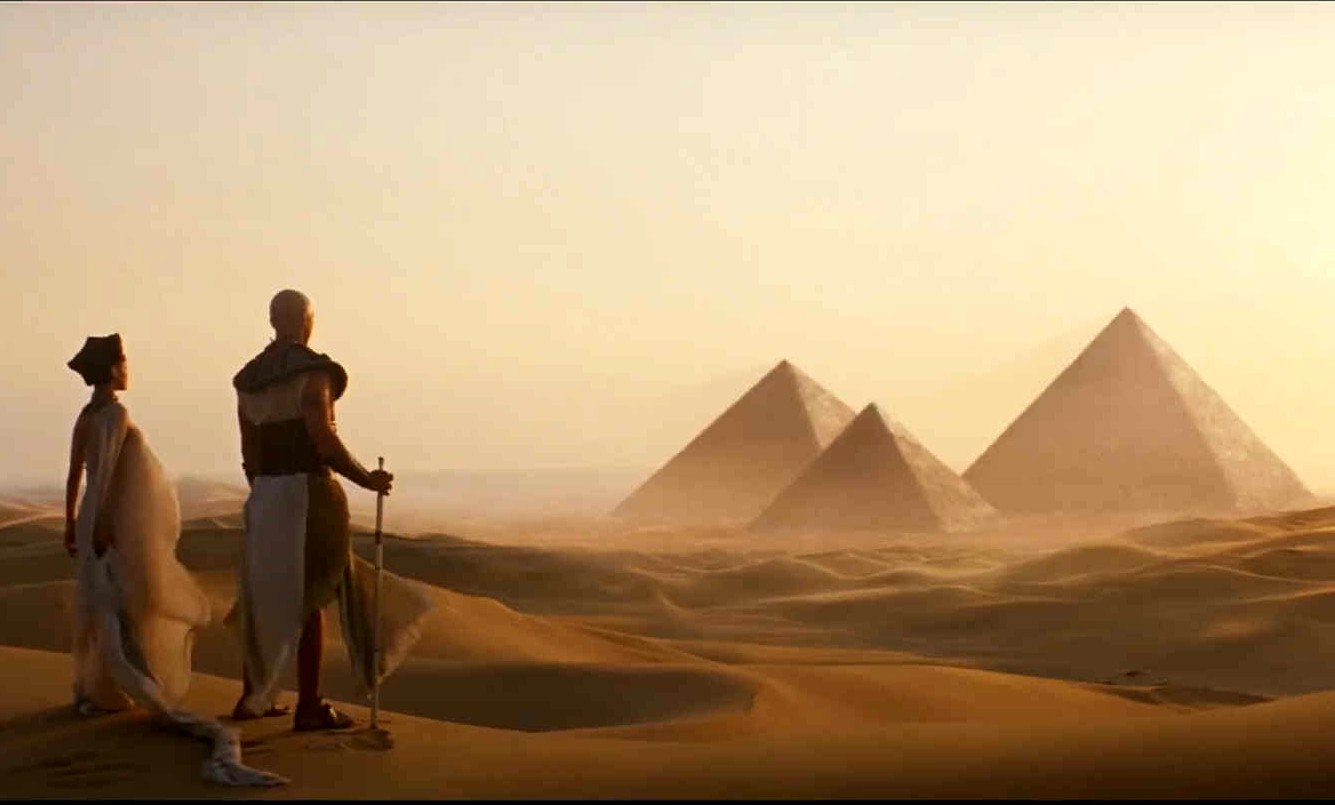|

Roman
Colosseum
Rome
(Italian and Latin: Roma) is the capital city of
Italy, and the country's largest and most populous comune,
with about 2,5 millions residents (3,8 millions
considering the whole urbanised area, as represented by
the Province of Rome). Capital of the Lazio region of
central-eastern Italy, Rome is located across the
confuence of the river Aniene into the Tiber. With a
gross domestic product of €97 billion in the year
2005, the comune of Rome produced 6.7% of Italy's
GDP, which is the highest proportion of GDP produced by
any single Italian comune. The current Mayor of
Rome is Walter Veltroni, at time of writing.
Founded
on April
21, 753 BC by the twins Romulus and Remus, according to
legend, Rome was once the capital of the Roman Empire,
the most powerful, largest and longest-lasting empire of
classical Western civilisation; after the Western Roman
Empire fell in 476, it became the seat of the Pope and
centre of the Catholic Church, as well as capital of the
Papal States. Rome was conquered by the newly unified
Kingdom of Italy in 1870, witnessed the rise of Italian
fascism, and finally became capital of the current
Italian Republic and one of the largest cities of the
European Union. The Vatican City is still contained as a
sovereign enclave within the city territory.
Rome,
whose city centre is a UNESCO
world heritage site
hosting some of the world's best known works of art and
monuments, is also called "la Città Eterna"
(the Eternal City), "l'Urbe" (Latin for
"the City" as an antonomasia) and "la
città dei sette colli" ("the city of the
seven hills").
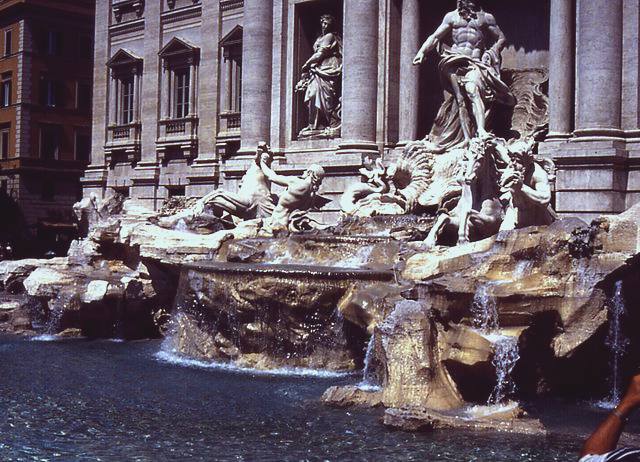
GEOGRAPHY
Location
Rome is in the Lazio region of central Italy on the Tiber river
(Italian: Tevere). The original settlement developed on hills that faced
onto a ford beside the Tiber Island, the only natural ford of the river
in this area. The Rome of the Kings was built on seven hills: the
Aventine Hill, the Caelian Hill, the Capitoline Hill, the Esquiline
Hill, the Palatine Hill, the Quirinal Hill, and the Viminal Hill. Modern
Rome is also crossed by another river the Aniene which flows into the
Tiber north of the historic
centre.
Although the city center is about 24 kilometres (15 mi) inland from
the Tyrrhenian
Sea, the city territory extends to the shore, where the
south-western district of Ostia is located. The altitude of the central
part of Rome ranges from 13 metres (43 ft) above sea level (at the base
of the Pantheon) to 139 metres (456 ft) above sea level (the peak of
Monte
Mario). The Comune of Rome covers an overall area of about 1,285
square kilometres (496 sq mi), including many green areas.
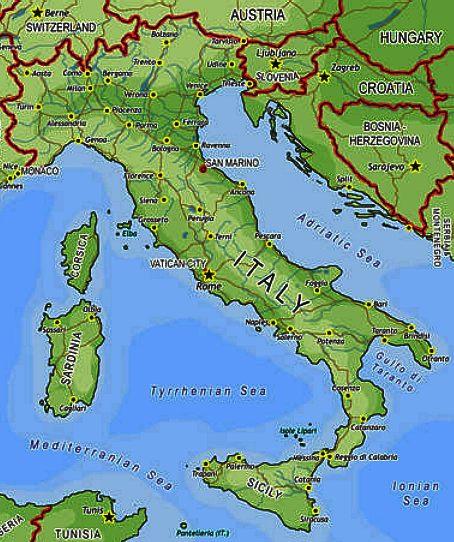
TOPOGRAPHY
Throughout
the history of Rome, the urban limits of the city were considered to be
the area within the city walls. Originally, these consisted of the
Servian Wall, which was built twelve years after the Gaulish sack of the
city in 390 BC. This contained most of the Esquiline and Caelian hills,
as well as the whole of the other five. Rome outgrew the Servian Wall,
but no more walls were constructed until almost 700 years later, when,
in 270 AD, Emperor Aurelian began building the Aurelian Walls. These
were almost 19 kilometres (12 mi) long, and were still the walls the
troops of the Kingdom of Italy had to breach to enter the city in 1870.
Modern Romans frequently consider the city's urban area to be delimited
by its ring-road, the Grande Raccordo Anulare, which circles the city
centre at a distance of about 10 km.
The Comune of Rome, however, covers considerably
more territory and extends to the sea at Ostia, the largest town in
Italy that is not a comune in its own right. The comune covers an area
roughly three times the total area within the Raccordo and is comparable
in area to the entire provinces of Milan and Naples, and to an area six
times the size of the territory of these cities. It also includes
considerable areas of abandoned marsh land which is suitable neither for
agriculture nor for urban development.
As a consequence, the density of the comune is
not that high, its territory being divided between highly urbanised
areas and areas designated as parks, nature reserves, and for
agricultural use.
CLIMATE
Rome enjoys a Mediterranean
climate
(Köppen climate classification:
Csa), with mild, humid winters and warm, dry summers.
Its average annual temperature is above 20 °C
(68 °F) during the day and 10 °C (50 °F) at night. In the coldest month –
January, the average temperature is 12 °C (54 °F) during the day and 3
°C (37 °F) at night. In the warmest months – July and August, the
average temperature is 30 °C (86 °F) during the day and 18 °C (64 °F) at
night.
December, January and February are the coldest
months, with average temperatures around 12.5 °C (54.5 °F) during the
day and 3.6 °C (38.5 °F) at night. Temperatures generally vary between
10 and 15 °C (50 and 59 °F) during the day and between 3 and 5 °C (37
and 41 °F) at night, with colder or warmer spells occurring frequently.
Snowfall is rare but not unheard of, with light snow or flurries
occurring almost every winter, generally without accumulation, and major
snowfalls once every 20 or 25 years (the last one in
2012).
The average relative humidity is 75%, varying
from 72% in July to 77% in November. Sea temperatures vary from a low of
13 °C (55 °F) in February and March to a high of 24 °C (75 °F) in
August.
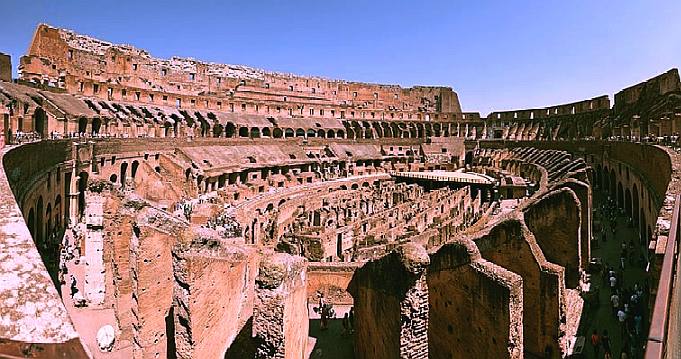
Photo by Paolo Costa
Baldi
RELIGION
Rome
is predominantly Roman Catholic, and the city has been an important
centre of religion and pilgrimage for centuries, the base of the ancient
Roman Religion with the pontifex maximus and later the seat of the
Vatican City and the pope. Before the arrival of the Christians in Rome,
the Religio Romana (literally, the "Roman Religion") was the major
religion of the city in classical antiquity. The first gods held sacred
by the Romans were Jupiter, the most high, and Mars, god of war, and
father of Rome's twin founders, Romulus and Remus, according to
tradition. Other gods and goddesses such as Vesta and Minerva were
honoured. Rome was also the base of several mystery cults, such as
Mithraism. Later, after St Peter and St Paul were martyred in the city,
and the first Christians began to arrive, Rome became Christian, and the
St. Peter's Basilica was first constructed in 313 AD. Despite some
interruptions (such as the Avignon papacy), Rome has for centuries been
the home of the Roman Catholic Church and the bishop of Rome, otherwise
known as the Pope.
Despite the fact that Rome is home to the
Vatican City and St. Peter's Basilica, Rome's cathedral is the Basilica
of St. John Lateran, located to the south-east of the
city-center. There are around 900 churches in
Rome in total, aside from the cathedral itself, some others of note
include: the Basilica di Santa Maria Maggiore, the Basilica of Saint
Paul Outside the Walls, the Basilica di San Clemente, San Carlo alle
Quattro Fontane and the Church of the Gesu. There are also the ancient
Catacombs of Rome underneath the city. Numerous highly important
religious educational institutions are also in Rome, such as the
Pontifical Lateran University, Pontifical Biblical Institute, Pontifical Gregorian University, and Pontifical Oriental Institute.
The territory of Vatican City is part of the
Mons Vaticanus, and of the adjacent former Vatican Fields, where St.
Peter's Basilica, the Apostolic Palace, the Sistine Chapel, and museums
were built, along with various other buildings. The area was part of the
Roman rione of Borgo until 1929. Being separated from the city on the
west bank of the Tiber
river, the area was an outcrop of the city that
was protected by being included within the walls of Leo IV, later
expanded by the current fortification walls of Paul III/Pius IV/Urban
VIII.
When
the Lateran Treaty of 1929 that gave the state its present form was
being prepared, the boundaries of the proposed territory was influenced
by the fact that much of it was all but enclosed by this loop. For some
tracts of the frontier, there was no wall, but the line of certain
buildings supplied part of the boundary, and for a small part of the
frontier a modern wall was constructed.
The
territory includes Saint Peter's Square, separated from the territory
of Italy only by a white line along the limit of the square, where it
touches Piazza Pio XII. St. Peter's Square is reached through the Via
della Conciliazione, which runs from the Tiber River to St. Peter's.
This grand approach was constructed by Benito Mussolini after the
conclusion of the Lateran Treaty. According to the Lateran Treaty,
certain properties of the Holy See that are located in Italian
territory, most notably Castel Gandolfo and the major basilicas, enjoy
extraterritorial status similar to that of foreign embassies.
In
recent years, there has been a significant growth in Rome's Muslim
community, mainly due to immigration from North African and Middle
Eastern countries into the city. As a consequence of this increase of
the local practitioners of the Islamic faith, the comune promoted the
building of the largest mosque in Europe, which was designed by
architect Paolo Portoghesi and inaugurated on 21 June 1995. Since the
end of the Roman Republic Rome is also the center of an important Jewish
community, which was once based in Trastevere,
and later in the Roman Ghetto. There lies also the major synagogue in
Rome, the Tempio Maggiore.
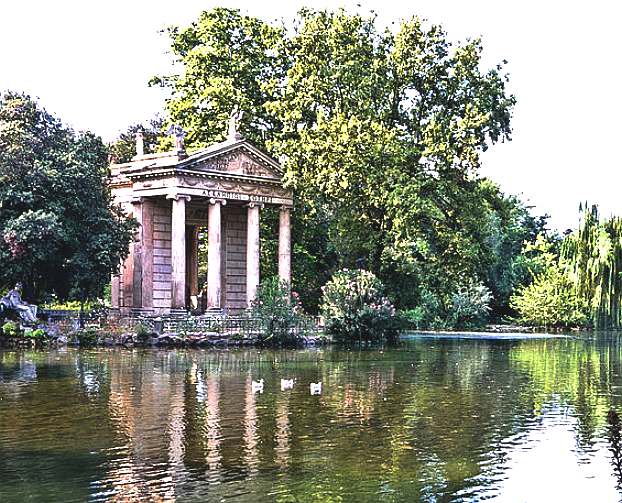
DEMOGRAPHICS
At
the time of the Emperor Augustus, Rome was the largest city in the
world: with a population of about one million people (about the size of
London in the early 19th century, when London was the largest city in
the
world).
After the fall of the Western Roman
Empire, the city's population fell
dramatically to less than 50,000 people, and continued to either
stagnate or shrink until the
Renaissance. When the Kingdom of Italy annexed
Rome in 1870, the city had a population of about 200,000, which rapidly
increased to 600,000 by the eve of World War I. The Fascist regime of
Mussolini tried to block an excessive demographic rise of the city, but
failed to prevent it from reaching one million people by early 1930s.
After the Second World War, growth continued, helped by a post-war
economic boom. A construction boom also created a large number of
suburbs during the 1950s and 1960s.
In mid-2010, there were 2,754,440 residents in
the city proper, while some 4.2 million people lived in the greater Rome
area (which can be approximately identified with its administrative
province, with a population density of about 800inhab./km2 stretching
over more than 5,000 km²). Minors (children ages 18 and younger)
totalled 17.00 percent of the population compared to pensioners who
number 20.76 percent. This compares with the Italian average of 18.06
percent (minors) and 19.94 percent (pensioners). The average age of a
Roman resident is 43 compared to the Italian average of 42. In the five
years between 2002 and 2007, the population of Rome grew by 6.54
percent, while Italy as a whole grew by 3.56
percent. The current birth rate of Rome is 9.10
births per 1,000 inhabitants compared to the Italian average of 9.45
births.
ETHNIC
GROUPS
According to the latest statistics conducted by
ISTAT, approximately 9.5% of the population consists of non-Italians.
About half of the immigrant population consists of those of various
other European origins (chiefly Romanian, Polish, Ukrainian, and
Albanian) numbering a combined total of 131,118 or 4.7 percent of the
population. The remaining 4.8 percent are those with non-European
origins, chiefly Filipinos (26,933), Bangladeshis (12,154), Peruvians
(10,530), and Chinese (10,283).
The Esquilino district, off Termini Railway
Station, has evolved into a largely immigrant neighbourhood, it is now
seen as Rome's Chinatown, but in fact immigrants from more than a
hundred different countries crowd its busy streets and piazzas. A
thriving commercial district, Esquilino boasts dozens of restaurants
featuring every kind of international cuisine. There are innumerable
wholesale clothes shops: of the 1,300 or so commercial premises
operating in the district 800 are Chinese-owned, around 300 are run by
immigrants from other countries around the world and some 200 are owned
by
Italians.
Hundreds of Romani gypsies live in illegal
trailer camps on the city's outskirts. There is a growing population of
homeless people in Rome, mostly not Italian and estimated at 7000.

GOVERNMENT
Rome
constitutes a comune speciale, named "Roma
Capitale", and is the largest both in terms of
land area and population among the 8,101 comuni of Italy. It is governed
by a mayor, currently Gianni Alemanno, and a city council. The seat of
the comune is the Palazzo Senatorio on the Capitoline Hill, the historic
seat of the city government. The local administration in Rome is
commonly referred to as "Campidoglio", the Italian name of the hill.
HISTORICAL
SUBDIVISIONS
Since
1972 the city has been divided into 19 (originally 20)
administrative areas, called municipi (sing.
municipio) (until 2001 named
circoscrizioni). They were created for
administrative reasons to increase decentralisation in the city. Each
municipio is governed by a president and a council of four members who
are elected by its residents every five years. The municipi frequently
cross the boundaries of the traditional, non-administrative divisions of
the city.
Rome is also divided into differing types of
non-administrative units. The historic centre is divided into 22 rioni,
all of which are located within the Aurelian Walls except Prati and Borgo.
These originate from the Regiones of ancient
Rome, which evolved in the Middle Ages into the medieval rioni. In the
Renaissance, under Pope Sixtus V, they reached again the number of
fourteen, and their boundaries were finally defined under Pope Benedict
XIV in 1743.
A new subdivision of the city under Napoleon
was ephemeral, and there were no sensible changes in the organisation
of the city until 1870, when Rome became the third capital of Italy. The
needs of the new capital led to an explosion both in the urbanisation
and in the population within and outside the Aurelian walls. In 1874 a
fifteenth rione, Esquilino, was created on the newly urbanised zone of Monti. At the beginning of the 20th century other rioni where created
(the last one was Prati – the only one outside the Walls of Pope Urban
VIII – in 1921). Afterward, for the new administrative subdivisions of
the city the name "quartiere" was used. Today all the rioni, except
Borgo and Prati, are part of the first Municipio, which therefore
coincides almost completely with the historical city (Centro Storico).

Provincial and regional government
Rome is the principal town of the homonymous
Province, which includes the city's metropolitan area and extends
further north until Civitavecchia. The Province of Rome is the 9th
largest by area in Italy. At 5,352 square kilometres (2,066 sq mi), its
dimensions are comparable to the region of Liguria. Moreover, the city
is also the capital of the Lazio region.
National government
Rome is the national capital of Italy and is the
seat of the Italian Government. The official residences of the
President of the Italian Republic and the Italian Prime Minister, the
seats of both houses of the Italian Parliament and that of the Italian
Constitutional Court are located in the historic centre. The state
ministries are spread out around the city; these include the Ministry of
Foreign Affairs, which is located in Palazzo della Farnesina near the
Olympic stadium.
ANCIENT
ROME
In modern historiography, ancient Rome is the Roman civilisation from the founding of the Italian city of Rome in the 8th century BC to the collapse of the Western Roman Empire in the 5th century AD. It encompasses the Roman Kingdom (753–509 BC), the Roman Republic (509–27 BC), and the Roman Empire (27 BC–476 AD) until the fall of the western empire.
Ancient Rome began as an Italic settlement, traditionally dated to 753 BC, beside the River Tiber in the Italian Peninsula. The settlement grew into the city and polity of Rome, and came to control its neighbours through a combination of treaties and military strength. It eventually controlled the Italian Peninsula, assimilating the Greek culture of southern Italy (Magna Grecia) and the Etruscan culture, and then became the dominant power in the Mediterranean region and parts of Europe. At its height it controlled the North African coast, Egypt, Southern Europe, and most of Western Europe, the Balkans, Crimea, and much of the Middle East, including Anatolia, Levant, and parts of Mesopotamia and Arabia. That empire was among the largest empires in the ancient world, covering around 5 million square kilometres (1.9 million square miles) in AD 117, with an estimated 50 to 90 million inhabitants, roughly 20% of the world's population at the time. The Roman state evolved from an elective monarchy to a classical republic and then to an increasingly autocratic military dictatorship during the Empire.
Ancient Rome is often grouped into classical antiquity together with ancient Greece, and their similar cultures and societies are known as the Greco-Roman world. Ancient Roman civilisation has contributed to modern language, religion, society, technology, law, politics, government, warfare, art, literature, architecture, and engineering. Rome professionalised and expanded its military and created a system of government called res publica, the inspiration for modern republics such as the United States and France. It achieved impressive technological and architectural feats, such as the empire-wide construction of aqueducts and roads, as well as more grandiose monuments and facilities.
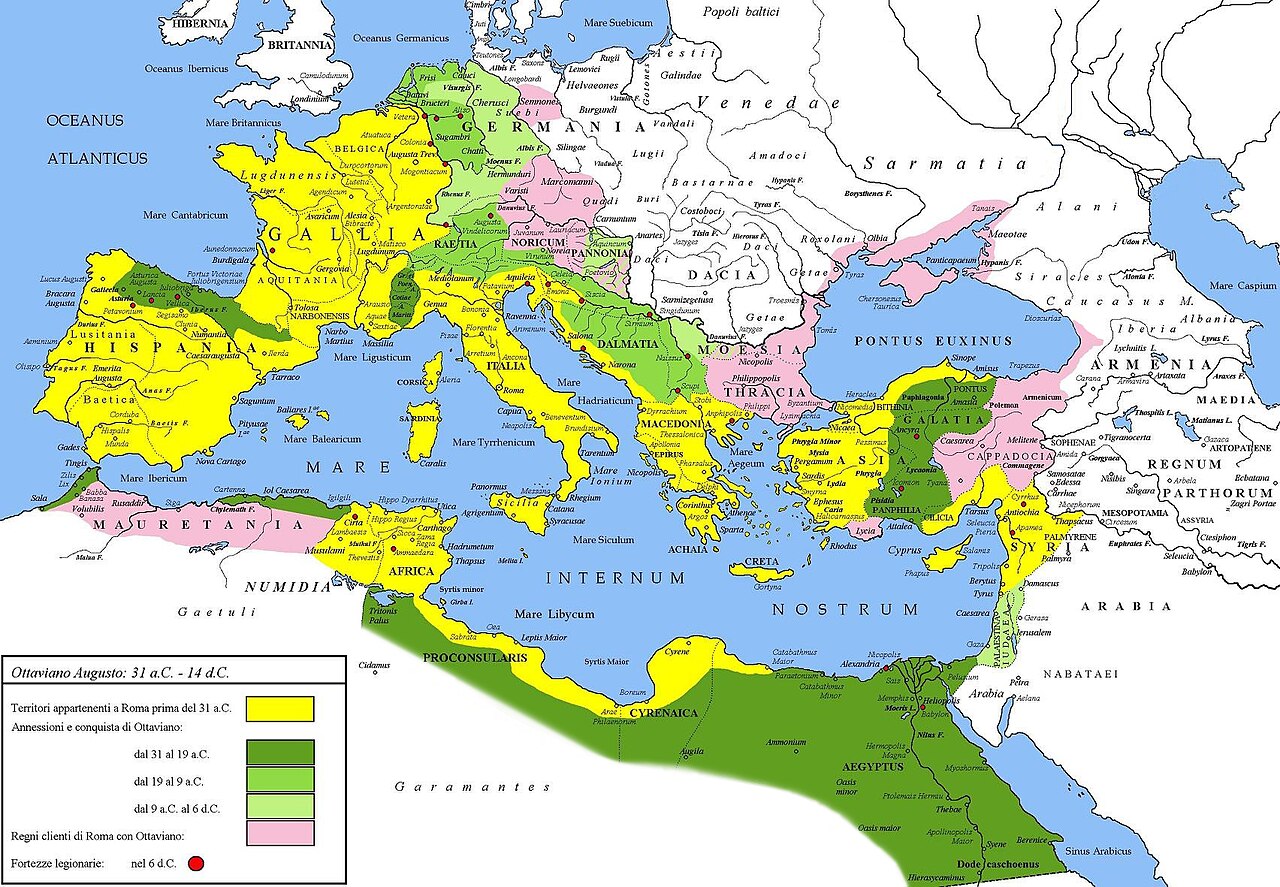
THE ROMAN EMPIRE
The Roman Empire ruled the Mediterranean and much of
Europe, Western Asia and North Africa. The Romans conquered most of this during the Republic, and it was ruled by emperors following Octavian's assumption of effective sole rule in 27 BC. The western empire collapsed in 476 AD, but the eastern empire lasted until the fall of Constantinople in 1453.
By 100 BC, Rome had expanded its rule to most of the Mediterranean and beyond. However, it was severely destabilized by civil wars and political conflicts, which culminated in the victory of Octavian over Mark Antony and Cleopatra at the Battle of Actium in 31 BC, and the subsequent conquest of the
Ptolemaic Kingdom in Egypt. In 27 BC, the Roman Senate granted Octavian overarching military power (imperium) and the new title of Augustus, marking his accession as the first Roman emperor. The vast Roman territories were organized into senatorial provinces, governed by proconsuls who were appointed by lot annually, and imperial provinces, which belonged to the emperor but were governed by legates.
The first two centuries of the Empire saw a period of unprecedented stability and prosperity known as the Pax Romana (lit. 'Roman Peace'). Rome reached its greatest territorial extent under Trajan (r. 98–117 AD), but a period of increasing trouble and decline began under Commodus (r. 180–192). In the 3rd century, the Empire underwent a 50-year crisis that threatened its existence due to civil war, plagues and barbarian invasions. The Gallic and Palmyrene empires broke away from the state and a series of short-lived emperors led the Empire, which was later reunified under Aurelian (r. 270–275). The civil wars ended with the victory of Diocletian (r. 284–305), who set up two different imperial courts in the Greek East and Latin West. Constantine the Great (r. 306–337), the first Christian emperor, moved the imperial seat from Rome to Byzantium in 330, and renamed it Constantinople. The Migration Period, involving large invasions by Germanic peoples and by the Huns of Attila, led to the decline of the Western Roman Empire. With the fall of Ravenna to the Germanic Herulians and the deposition of Romulus Augustus in 476 by Odoacer, the Western Empire finally collapsed. The Eastern Roman Empire survived for another millennium with Constantinople as its sole capital, until the city's fall in 1453.
Due to the Empire's extent and endurance, its institutions and culture had a lasting influence on the development of language, religion, art, architecture, literature, philosophy, law, and forms of government across its territories. Latin evolved into the Romance languages while Medieval Greek became the language of the East. The Empire's adoption of Christianity resulted in the formation of medieval Christendom. Roman and Greek art had a profound impact on the Italian Renaissance. Rome's architectural tradition served as the basis for Romanesque, Renaissance and Neoclassical architecture, influencing Islamic architecture. The rediscovery of classical science and technology (which formed the basis for Islamic science) in medieval Europe contributed to the Scientific Renaissance and Scientific Revolution. Many modern legal systems, such as the Napoleonic Code, descend from Roman law. Rome's republican institutions have influenced the Italian city-state republics of the medieval period, the early United States, and modern democratic republics.
|
Adelaide
Aden
- Yemen
Afghanistan
Africa
- Central
- East
Alaska
Algeria
Amsterdam
Antarctic
- Antarctica
Arctic
- North
Pole
Argentina
Asia
Athens
Australia
Austria
Aztecs
- Mexico
Bahamas
Bangladesh
Baghdad
Bahrain
Barbados
Beachy
Head, England
Belgium
Berlin
Bermuda
Black
Rock Desert, Nevada
Bohemia
Bolivia
Bonneville,
Utah - History
Brazil
Brighton
- West Pier
British
Columbia
Bulgaria
Burma
Canada
Canary
Islands
Cape
Hope
Cape
York - Au
Caribbean
- Central America
Cayman
Islands
Chichester
Harbour
Chile
China
- Beijing
Columbia
- S. America
Columbo
- Sri Lanka
Cowes,
Isle of Wight
Croatia
Cuba
Cyprus
Czechoslovakia
Darwin
- Australia
Daytona
Beach
- Florida USA
Denmark
Dubai
Eastbounre
Pier, England
Earthquakes
East
Africa
Egypt
Equador
Equator
Europe
Falkland
Islands
Falmouth,
Cornwall
Fiji
Finland
Florida
France
Galapagos
Islands
Geography
Links
Geography
Records
Geography
Resources
|
Geography
Statistics
Germany
Gibraltar
- Links
Greece
Greenland
Hampshire
Hawaii
Holland
- Volendam
Hollywood,
California, LA
Hong
Kong
Hungary
Hurricanes
Iceland
India
- Mumbai
Indonesia
Links
Iran
Iraq
Ireland
Isle
of Man
Isle
of Wight - The
Needles
Israel
Italy
Jakarta
- Java
Jamaica
Japan
Jordan
Kent,
England - Sandgate
Kenya
Korea
Republic
of (South)
Kuwait
Kyoto
- Japan
Las
Vegas -
Lebanon
Libya
Life
on Earth
London
- Big
Ben
London
Eye - Madame
Tussauds
London
Houses
Parliament
London
- Buckingham
Palace
London
- Old
Bailey
London
- Overview
London
- The City
London
- Tower Bridge
London
- Trafalgar
Square
Luxembourg
Malaysia
Malta
Maya
Empire -
Central America
Melbourne,
Australia
Mexico
Middle
East
Monaco
Morocco
Mountains
Naples-
Italy
National
Geographic
Nepal
Nertherlands
- Eindhoven
New
York
New
Zealand
Nigeria
North
Africa
Norway
Nova
Scotia
Oceans
and Seas
Oman
Pakistan
Palermo
- Sicily
Palestine
Palma
- Malorca
|
Panama
Canal - Links
Paris
Pendine
Sands - Carmarthen
Peru
Philippines
Pisa
Planet
Earth
Poland
Port
Moresby - PNG
Port
Said - Egypt
Portugal
Puerto
Rico
Qatar
Quebec
Rio
de Janeiro
Romania
Rome
Russia
Salt
Lake City - Utah
Saudi
Arabia
Scotland
Senegal
West Africa
Singapore
Somalia
South
Africa
South
America
Southampton
Spain
- Espana
Sri
Lanka - Links
Stonehenge
Suez
Canal
Sudan
Surrey,
England Index
Sussex,
England Index
Sweden
Switzerland
Sydney,
Australia
Syria
Tahiti
- Polynesia
- Links
Taiwan
Thailand
Tokyo,
Japan
Tonga
- Polynesia
Toronto
Trinidad
- Lesser Antilles
Tsunami
Tunbridge
Wells, England
Tunisia
Turkey
UAE
- United Arab Emirates
UK
Statistics
Ukraine
United
Kingdom
United
Kingdom -
Gov
USA
Vatican
City
Venezuela
Venice
Vienna
Vietnam
Volcanoes
Wales
- Bridgend
Washington
D.C.
Wealden
iron industry
Wendover,
Utah
West
Africa
World
Peace Supporters
Yemen
Yugoslavia
Zurich
|

(330ml
Earth can)
|









